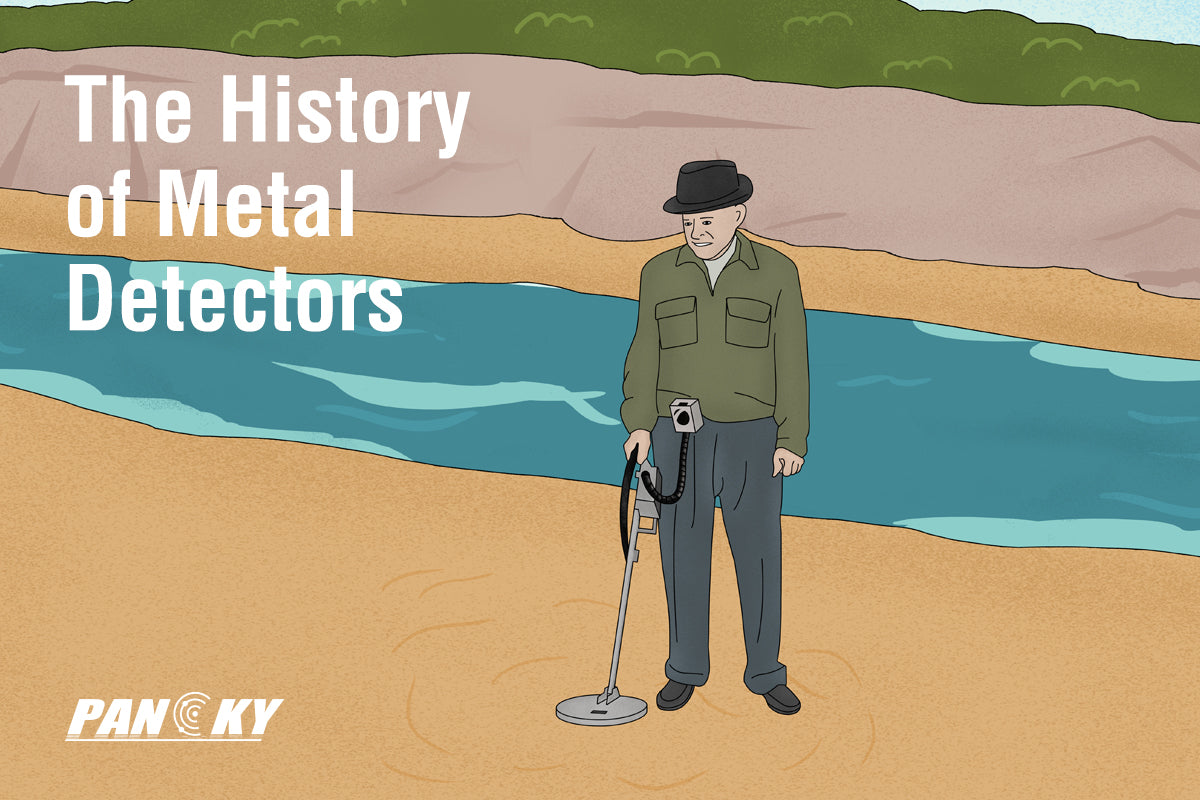Metal Detecting History Short Story – Learn More About the Creation and Development of Metal Detectors
Discoveries about electricity and devices that could identify metal underground for miners and scientists grab the attention of many early inventors. Today’s metal detecting hobby looks quite different from the early years of cumbersome machines scanning the ground for mines during wartime or gold veins for hopeful adventurers.
Two of the most important short story historical events that changed the world of metal detecting forever involve the development of portable machines and improvements to the electromagnetic qualities.

Electromagnetic Metal Locators to Save a President
In 1880, political hopeful Charles J. Guiteau back the Republican candidate James A Garfield. His grandiose plans failed to come to fruition, however, when the new president did not choose him for a prestigious post in France. Guiteau, whom historians suspect suffered from mental illness, became so upset by the perceived slight that he followed the president, hid in the railroad station, and burst out as the president passed to shoot him twice in the arm and back.Those days of primitive medical treatment did not include x-rays to locate the bullets. Instead, Alexander Graham Bell was called in to help. With a very early form of a metal detector, he tried to find where they were lodged in the president’s body but was unsuccessful. After several tries, the attending physicians did claim that they had found the bullets and attempted some exploratory surgery.
Despite all their efforts, infection set in, and Garfield succumbed to the bullet wounds on September 18. Although ultimately unsuccessful in this case, the use of a metal detector signified one of the first times such equipment was used for this type of procedure. Over the years, metal detectors became quite useful especially during wartime defined bullets and fragments and help wounded people recover.
The First Portable Metal Detectors
Convenience is one of the most compelling needs that drive invention and technological advancements throughout history. Gerhard Fischer, a research engineer living in Los Angeles, CA, was working on ways to detect the radios used in planes to help with wartime efforts. At the Fischer Research Laboratory, he earned patents for airborne detection.
Was not enough for this German-born electronics expert, however. He used some of the same techniques and tools to create the first portable metal detectors. He got the patent in 1925 and released his product to the market six years later. This was the first example of commercially available detecting equipment for public use.
The rest is history, as they say. Metal detectors are a great product that was testified by historical experiences throughout the last century and more. Although the technology behind this equipment has changed considerably since the earliest days, every short story like the ones shared here is part of the amazing development. As you learn more about how they work and what role they played in various historical events, you will become even more interested in trying metal detecting for yourself.
